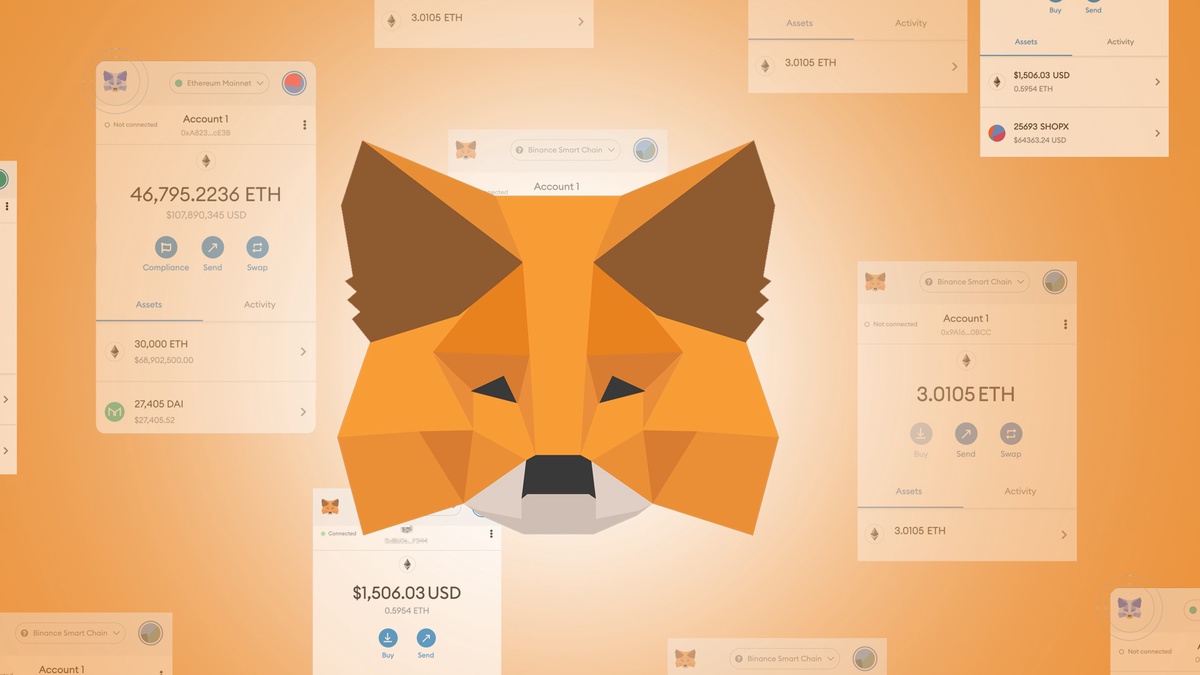Cryptocurrencies have gained immense popularity in recent years, leading to an increased demand for secure and user-friendly cryptocurrency wallets. MetaMask, a browser extension wallet, has become a go-to choice for many crypto enthusiasts. Its intuitive interface and robust security features have made it a favorite among users. If you're looking to develop a cryptocurrency wallet similar to MetaMask.
In this comprehensive guide will walk you through the process. We'll explore the essential features, technologies, and steps involved in creating a MetaMask clone.
Understanding MetaMask
Before diving into the development process, let's take a closer look at MetaMask. It is a browser extension wallet that allows users to manage their Ethereum-based assets and interact with decentralized applications (dApps) seamlessly. MetaMask provides users with a secure and convenient way to store, send, and receive cryptocurrencies, as well as connect with various blockchain networks.
Essential Features of a MetaMask Clone
To create a successful MetaMask clone, it's crucial to incorporate essential features that users have come to expect. These features include:
- Wallet Creation and Recovery: Enable users to create a new wallet securely, generate a unique seed phrase, and offer a simple recovery mechanism in case of lost or forgotten access.
- Multi-Currency Support: Support a wide range of cryptocurrencies, including popular ones like Bitcoin, Ethereum, and others. This allows users to manage their diverse portfolios effectively.
- Seamless Integration with dApps: Provide a user-friendly interface for interacting with decentralized applications directly from the wallet. Enable users to approve transactions, sign messages, and interact with smart contracts effortlessly.
- Security Measures: Implement robust security features such as two-factor authentication (2FA), encryption, and private key management to ensure the safety of users' funds and personal information.
- Customizable Network Support: Allow users to connect to different blockchain networks, enabling them to switch between Ethereum's mainnet, testnets, and other compatible networks.
Technologies for Developing a MetaMask Clone
To develop a MetaMask clone, you need to leverage appropriate technologies. Here are some key technologies commonly used in cryptocurrency wallet development:
- Blockchain Integration: Integrate with blockchain networks using web3.js or similar libraries to interact with the Ethereum blockchain and other supported networks.
- User Interface (UI) Design: Utilize popular front-end frameworks like React.js or Angular.js to create an intuitive and responsive user interface for your wallet.
- Security Protocols: Implement security protocols such as HTTPS, SSL/TLS, and encryption algorithms to protect users' sensitive information and ensure secure communication with the wallet server.
- Wallet Back-End Development: Develop a robust back-end infrastructure using technologies like Node.js or Golang. This will handle various operations such as transaction processing, address generation, and interacting with the blockchain.
Development Steps for MetaMask Clone
To create a MetaMask clone, follow these fundamental steps:
- Project Planning: Define the scope, target audience, and specific requirements of your wallet. Consider factors such as supported cryptocurrencies, dApp compatibility, and security measures.
- User Interface Design: Create wireframes and design prototypes for your wallet's user interface. Ensure a seamless and intuitive user experience, focusing on ease of use and aesthetic appeal.
- Front-End Development: Implement the designed user interface using your chosen front-end framework. Integrate web3.js or similar libraries to connect with the blockchain and enable dApp interaction.
- Back-End Development: Set up a secure and scalable back-end infrastructure to handle wallet operations and interaction with the blockchain. Implement necessary security protocols to safeguard user data.
- Testing and Quality Assurance: Thoroughly test your wallet's functionality, compatibility, and security features. Conduct both manual and automated tests to identify and fix any bugs or vulnerabilities.
- Deployment and Maintenance: Deploy your wallet on the desired platforms, such as browser extension stores or mobile app stores. Regularly update and maintain your wallet to provide users with the latest features and security enhancements.
Cryptocurrency Wallet Development Services
If you're not well-versed in blockchain technology or software development, you may consider hiring a professional cryptocurrency wallet development service provider. These firms specialize in building secure and feature-rich wallets tailored to your specific requirements. By partnering with experts, you can ensure a smooth development process and launch a high-quality MetaMask clone efficiently.
Final Thoughts
Developing a cryptocurrency wallet like MetaMask requires a deep understanding of blockchain technology, security practices, and user experience design. By incorporating essential features and leveraging appropriate technologies, you can create a robust and user-friendly wallet. Whether you choose to build it in-house or rely on professional development services, the end result should be a secure and feature-rich MetaMask clone that empowers users to manage their cryptocurrencies with ease. Remember, continuous updates and improvements are crucial to stay ahead in the ever-evolving cryptocurrency landscape.


No comments yet